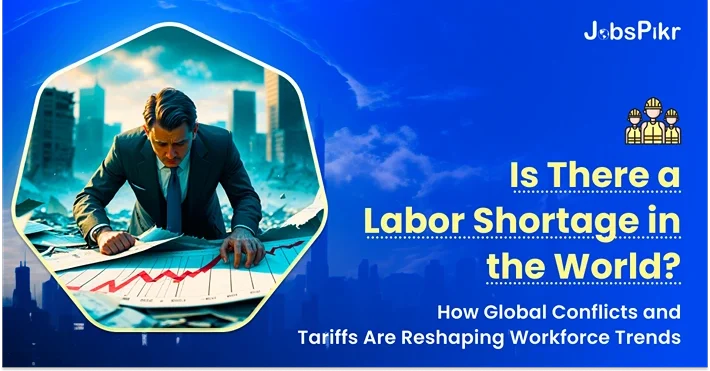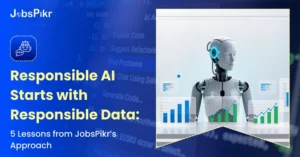- **TL;DR**
- Stop Asking if There’s a Labor Shortage. Ask Where and Why
- See JobsPikr in Action
- The "Shortage" Isn't Short: It’s a Patchwork Quilt Full of Holes
- How Wars Are Stealing Your Workers (No, Really)
- Trade Wars & Tariffs: The Stealthy Job Thieves
- Why Tariffs Make Local Shortages WORSE:
- See JobsPikr in Action
- US Labor Shortage? It’s a Bloodbath in Some Sectors, a Flood in Others
- 3 Workforce Trends Redefined by a Messy World (Stop Ignoring These)
- The Rise of Regional Talent Micro-Markets
- JobsPikr: Your Geopolitical Workforce X-Ray (Seeing the Mess Before It Hits You)
- Shortages Are the Game. Play to Win.
- See JobsPikr in Action
- Frequently Asked Questions
**TL;DR**
Forget the fluffy headlines screaming “Nobody Wants to Work Anymore!” That’s lazy. The real story’s messier, bloodier, and has tanks and tariffs all over it. Yeah, finding workers sucks in some places, for some roles. But calling it a simple “shortage”? That’s like calling a hurricane a bit of wind. What we’ve got is a brutal cocktail: aging folks clocking out, pandemic scars still raw, and crucially, wars exploding and trade fights rerouting the global flow of workers like a busted GPS. If you’re hiring, planning, or just trying to keep the lights on, winging it isn’t an option. It’s suicide.
We’re ripping off the band-aid: where the shortages hurt most, how Ukraine, Gaza, and the US-China knife fight make it infinitely worse, and why real-time data isn’t just useful – it’s your only damn life raft.
Stop Asking if There’s a Labor Shortage. Ask Where and Why
“Is there a labor shortage?” is the wrong question.
In 2025, the real issue is not whether workers exist, but whether the right skills exist in the right places at the right time, under increasingly volatile geopolitical and economic conditions. Wars disrupt migration flows overnight. Tariffs redraw manufacturing maps faster than training systems can respond. Aging workforces retire with knowledge that isn’t easily replaced.
Calling this a single “global labor shortage” flattens reality. What employers, governments, and workforce planners are dealing with is a mosaic of scarcity and surplus, a system under constant stress where misalignment is the rule, not the exception.
This article breaks down:
- Why the labor shortage is structural, not cyclical
- How global conflicts and tariffs quietly drain talent
- Which sectors are under existential pressure
- How workforce trends are redefining hiring in 2025
- Why data-driven labor intelligence is no longer optional
See JobsPikr in Action
Track regional talent micro-markets and hiring trends in real time—so you can hire faster, cheaper, and with confidence.
The “Shortage” Isn’t Short: It’s a Patchwork Quilt Full of Holes
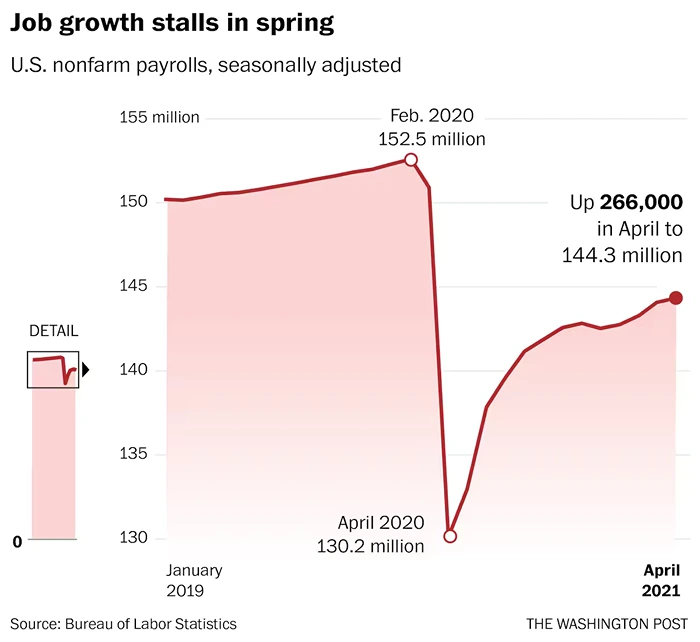
Image Source: Washington Post
So, is there actually no one to hire? Yes and no. It’s not uniform. Picture a quilt. Some patches are threadbare to the point of transparency (nurses, sparkies, AI whizzes), others are piled high (generic office admin, entry-level retail). Why?
- Skills Mismatch: It’s Getting Ugly. Remember when everyone said “learn to code”? Well, those specialized gigs (coding, advanced manufacturing, green tech) were already outpacing others pre-COVID (World Bank says 25% faster). Then the pandemic hit. Training pipelines choked. Apprenticeships stalled. Now? The gap’s a canyon. Need a cybersecurity pro who can actually stop ransomware, not just talk about it? Good luck finding one of the 4 million needed globally (ISC²). This isn’t a lack of warm bodies; it’s a desperate hunt for very specific brains.
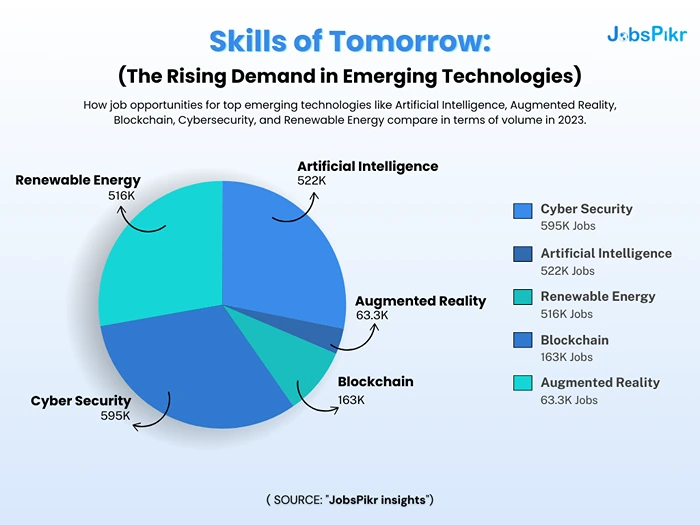
Image Source: JobsPikr Skills of Tomorrow
- The Great Retirement Wave? More Like a Tsunami. Globally, nearly 1 in 5 workers will be over 55 by 2030 (ILO). They’re bailing – taking decades of know-how with them. Gen Z’s flooding in, sure, but they can’t magically replace a master electrician’s 30 years of troubleshooting. Worse? We’re ignoring Gen X. That smaller, squeezed generation? They’re hitting peak experience now and are prime candidates for burnout or sweet early exit deals. Lose them, and you lose the mentors teaching Gen Z. It’s a double-whammy experience drain.
- Location, Location, Desperation: Some San Fran tech bro gets 500 resumes for one job. A cutting-edge chip fab in bum-fluff nowhere, Ohio? Crickets. Absolute crickets. The pandemic rewired brains: tons of folks won’t relocate for love or money, especially for on-site factory or hospital gigs. Meanwhile, boomtowns created by reshoring (think battery plants in the US South) hit a brick wall: no local talent pool. We’ve got “skills deserts” – whole regions where generations missed the tech boat.
- The Participation Problem: Not everyone came back after COVID. Some retired early. Others (often women) got stuck juggling insane caregiving loads. Long COVID knocked others out. Some just said, “screw this rat race.” Fewer people actively looking means the holes in those threadbare quilt patches just get bigger.
Bottom line? Anyone shouting “labor shortage!” like it’s one thing is clueless. It’s a targeted, worsening crisis where skills gaps, geography, aging, and personal choices collide like a multi-car pileup. Miss one factor, your strategy’s dead on arrival.

How Wars Are Stealing Your Workers (No, Really)
War isn’t just hell; it’s a talent vacuum cleaner. Here’s how current conflicts torch labor pools:
- The Refugee Double-Whammy:
- Instant Skills Blackout: When rockets fly, skilled workers bolt. Ukraine saw 6+ million working-age adults vanish overnight (UNHCR). Poof. Doctors, engineers, IT pros – gone. Local hospitals collapse. Tech hubs go dark. Harvests rot. This ain’t just Ukraine’s problem; it’s yours when that Ukrainian neon gas (vital for chips) dries up.
- Host Nation Hangover: Countries like Poland and Germany stepped up heroically. But absorbing millions overnight? It’s chaos. Skilled refugees face red tape mountains getting their credentials recognized. Meanwhile, housing costs in Warsaw or Berlin went stratospheric. Local nurses suddenly can’t afford rent and bail for cheaper towns – or quit altogether. The “help” inadvertently pushes locals out.
- The Brain Gain Illusion: Sure, host countries get potential talent. But using it? That needs serious cash for language training, credential checks, job matching – resources stretched thinner than government budgets. Wait too long, skills fade, hope dies. Opportunity lost.
- Supply Chains Snap, Workers Scatter: Miss one widget from a Taiwan under constant threat? A whole Ohio auto plant stops. Tariffs jack up Chinese steel costs? Layoffs follow. Idled workers don’t twiddle thumbs; they retrain (leaving the industry), move, or quit. The 2021 chip shortage idled plants globally. Workers found new gigs in Amazon warehouses or construction. They didn’t come back. Every disruption doesn’t just pause things; it permanently scatters talent.
- Brain Drain: The Permanent Wound: Young talent doesn’t just leave war zones; they never come back. Lebanon has lost 40% of its doctors since 2019 (WHO). Gaza’s promising tech scene? Obliterated. This isn’t temporary. The students, the future engineers and entrepreneurs? They’re building lives in Berlin, Toronto, and Dubai. The country’s future skill base is gutted. Recovery takes decades.
Stat Punch: Over a third of manufacturers cite geopolitical mess as a top hiring blocker (McKinsey, 2023). The risk isn’t just finding folks; it’s your existing team getting spooked and jumping ship.
Trade Wars & Tariffs: The Stealthy Job Thieves
Tariffs feel like a DC dinner party problem until your star plant manager quits because production moved to Mexico. Trade wars violently shove jobs around the globe:
Case Study: US-China Tech Fight – The Unseen Labor Carnage
- 2018: US slaps tariffs on Chinese chips. Goal: Boost US manufacturing. Cool.
- 2020: US chip fabs panic-hire. Problem: Decades of offshoring left the US talent pipeline bone dry. Oops.
- 2023: CHIPS Act cash fuels new US fabs in Arizona, Ohio, Texas. New nightmare: Zero local workers who know how to build these insane clean rooms. Specialized welders? Are electricians trained for ultra-pure gas lines? HVAC wizards? Nowhere near enough. project stalls. Wages explode. Talent gets poached from other critical projects like bridges and power grids. The jobs moved, but the specific skills didn’t magically appear. Epic planning fail.
Why Tariffs Make Local Shortages WORSE:
- Costs Up → Hiring Frozen: Tariffs make stuff expensive. Companies slash costs. Guess what’s expendable? Headcount. Hiring freezes hit. Local talent gluts form beside raging shortages. Net result? The market tightens like a vice.
- Production Moves → Skills Lag (Badly): Jobs bolt from China to “friendly” spots like Vietnam or Mexico (“friendshoring”). But does Ho Chi Minh City have 10,000 certified semiconductor process engineers overnight? Nope. Building complex stuff needs trained humans – QC engineers, maintenance techs, logistics pros. Ramp-up takes ages. Global shortages drag on; new locations face insane hiring pressure.
- Inflation → Worker Revolt: Tariffs fuel inflation. Prices soar. Workers rightly demand more cash. SMBs (your local restaurant, hardware store) get crushed. They can’t match big corp wages funded by tariff reshoring subsidies. Workers ditch SMBs for better-paying factory gigs. Local shortages for cafes and shops are critical. The little guy gets murdered.
- The Investment Deep Freeze: Who trains workers for an export sector when tariffs could slam the door shut next month? Uncertainty kills long-term workforce investment. The pipeline starves.
See JobsPikr in Action
Track regional talent micro-markets and hiring trends in real time—so you can hire faster, cheaper, and with confidence.
US Labor Shortage? It’s a Bloodbath in Some Sectors, a Flood in Others
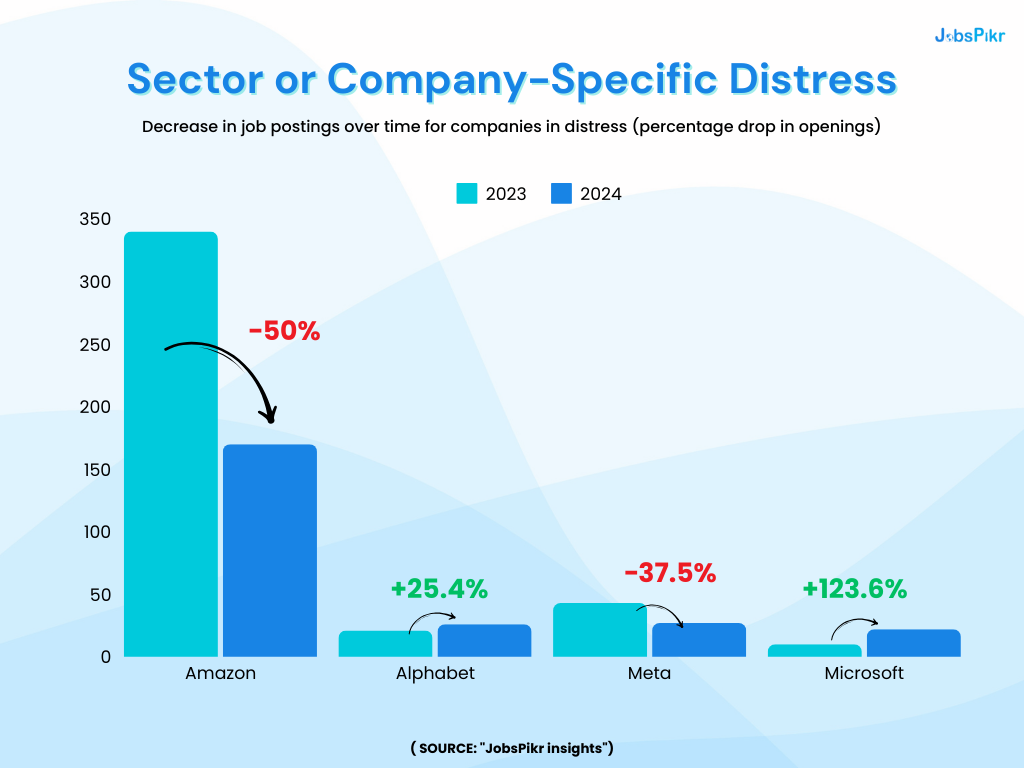
Image Source: US IT Sector Challenges by JobsPikr
- Ask a Miami restaurateur: *“$20/hour for dishwashers and I’m still scraping by!”*
- Ask an Austin tech recruiter: “AI grads? Plenty. Senior devs who know legacy systems? Like finding blood from a stone.”
- Ask a rural Kansas hospital CEO: “Travel nurses are our permanent staff. Local hires? Mythical creatures.”
The US Reality? Shattered:
- Ground Zero Shortages:
- Healthcare: Burning down. Aging population + retiring nurses + COVID burnout + too few training spots = Need 1.1M+ more nurses by 2030 (BLS). Docs? Same story, worse in rural areas. It’s a five-alarm fire.
- Construction/Trades: Decades of pushing “college for all” gutted vocational ed. Boomer tradespeople are retiring en masse. Hard, physical work. Shortage? Try 650,000+ open jobs (NAHB). Electricians, plumbers, welders? Gold dust. The CHIPS Act and Infrastructure Bill just poured gasoline on this inferno.
- Transportation: 80,000+ truckers short (ATA). Aging drivers, brutal lifestyle, and regulations. Air traffic controllers? Also MIA, causing flightmare.
- Education: Teachers, especially STEM & special ed, are fleeing stress, pay, and politics. Who teaches the next workforce? Uh oh.
Surplus? (With Asterisks): Entry-level tech (post-layoffs), some retail management. But even here, finding folks with the right grit, soft skills, or niche experience? Still tough.
- The Geopolitical Gut Punch:
- Reshoring Rush vs. Reality: Biden’s tariffs on Chinese EVs, batteries, steel? CHIPS Act billions? All scream, “Build Here!” Awesome. But WHO builds it? Where are the welders, pipefitters, and engineers? Already drowning in demand. Policy ambition smashed into a labor market brick wall.
- Immigration Self-Sabotage: Need farm hands? Hotel cleaners? Home health aides? Legal immigration paths are a Kafkaesque nightmare. Politics paralyzes fixes. Artificial scarcity created.
- Geography is Destiny: New mega-factories are plopped in places without housing, schools, or workers. Remote work? Not an option for pouring concrete or running a CNC machine.
Verdict: Does the US have a labor shortage? Abso-freaking-lutely – in the sectors that keep the lights on, build the future, and care for the sick. It’s structural, demographic, and massively worsened by the chaotic scramble to reshore amidst wars and trade fights. Ignore it at your peril.
3 Workforce Trends Redefined by a Messy World (Stop Ignoring These)
Forget RTO drama. The real shifts are tectonic:
- Skills-First Hiring: Not Nice, NECESSARY: Giants like Siemens, Google, and IBM are ditching degree dogma. Why? They need coders, robot tuners, and data jockeys yesterday. The old conveyor belt is too slow, too misaligned. This is everywhere: factories needing CNC ops certified on specific machines, hospitals needing MAs who know your EHR inside out.
- Do This NOW: Burn job descriptions demanding irrelevant degrees. Partner HARD with community colleges/bootcamps – build exact micro-certs YOU need. Use skills assessments upfront. Scan resumes for real skills (Python, PLCs, Salesforce Admin), not fancy schools. Upskill internally, like your business depends on it (because it does).
- Remote Work Hits the Geopolitical Wall: That dream of hiring geniuses anywhere? Crushed by war, sanctions, data laws (GDPR, CCPA), and security rules. Ukraine’s dev shops kept the West running. Now? Companies are frantic, relocating ops to “safer” spots like Portugal or Mexico.
- Do This NOW: Audit your talent locations – what’s the political risk? Diversify your hubs FAST. Don’t bet on one country. Pick spots with stability, solid data laws, and good infrastructure. Lock down cross-border data/compliance protocols. Tools like JobsPikr are essential to find stable talent pools BEFORE the herd arrives. Have a bailout plan if a region implodes.
- Job Security is the New King (Forget Ping Pong Tables): Pandemics, wars, inflation, AI doom-scrolling… workers are spooked. PwC found that 65% global respondents value job security over more cash. It’s not just avoiding layoffs; it’s stability, predictability, working for a durable, ethical ship in a storm.
- Do This NOW: Scream stability in your employer brand. Show long-term vision & financial health. Build killer internal mobility paths – show career ladders. INVEST in upskilling – prove you want them to be employable for life. Boost benefits that scream “we’ve got you”: top health insurance, financial wellness help, and real mental health support. Stop the bleeding: Retention is your cheapest, most powerful recruitment tool. Calculate turnover cost – it’ll scare you into action.
The Rise of Regional Talent Micro-Markets
The idea of a single, unified global talent pool is officially outdated. In 2025, talent doesn’t move or behave at a global average — it clusters, fragments, and accelerates in regional micro-markets shaped by geopolitics, education systems, industry investment, and even local cost-of-living pressure.
These micro-markets share three defining traits:
- Highly specialized: Skills concentrate around very specific technologies, industries, or tools rather than broad job families.
- Regionally concentrated: Talent forms around cities or corridors, not entire countries.
- Fast-moving: Demand, wages, and availability can shift in months, not years.
Why micro-markets are replacing the “global pool.”
Industrial policy, conflict-driven migration, and reshoring have pulled skills into tight geographic clusters. Battery engineers gravitate around new EV corridors. Semiconductor process experts follow fabs. AI researchers cluster near compute infrastructure and research funding. Once these hubs form, they reinforce themselves — more jobs attract more talent, which attracts more investment.
At the same time, mobility has limits. Housing shortages, visa restrictions, language barriers, and family considerations slow the movement of experienced workers. Instead of talent flowing freely, it pools locally — and those pools behave very differently from global averages.
The cost of hiring on average
Organizations that benchmark talent using national or “global” data often misread reality. They assume:
- Skills are evenly distributed
- Wages scale predictably
- Hiring timelines are consistent
In micro-markets, none of this holds. Two cities in the same country can show radically different salary bands, candidate availability, and churn risk for the same role. Hiring based on averages leads to delayed projects, inflated compensation, and missed market entry windows.
First-mover advantage in emerging hubs
Companies that track micro-markets early gain two advantages: cost control and speed. Entering a talent hub before demand peaks allows teams to hire at sustainable wages, build local reputation, and secure experienced candidates before competition intensifies.
By the time a location shows up in mainstream “top talent city” lists, it’s usually overpriced and oversubscribed.
What this means for workforce strategy
Winning in a micro-market world requires a shift in mindset:
- Monitor talent supply and demand at the city or cluster level, not country level
- Evaluate expansion locations based on skill density, not just incentives
- Time hiring and facility launches together, not sequentially
- Treat talent location as a strategic asset, not an operational detail
In 2025, the companies that hires best are not the ones with the biggest employer brand globally — they’re the ones that see regional talent patterns forming before everyone else does and act while others are still benchmarking spreadsheets.
JobsPikr: Your Geopolitical Workforce X-Ray (Seeing the Mess Before It Hits You)
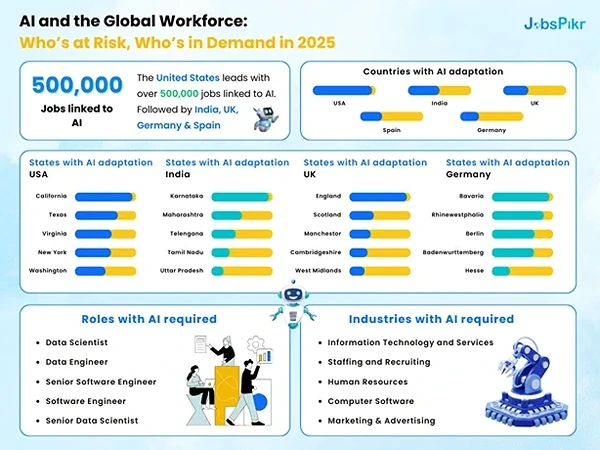
Image Source: AI Driven Job Descriptions by JobsPikr
When missiles fly or tariffs drop overnight, being slow costs millions. Gut feel? Worthless. Real-time global labor intel is survival gear. Here’s how JobsPikr cuts through the fog:
- Spot Talent Fleeing (Early Warning): See engineers bailing on Russia for Armenia? UK nurses eyeing Australia? JobsPikr spots these moves as they start via job posts, resume updates, and network buzz. Not news – foresight. You get months to pivot hiring before your talent pool evaporates or costs triple.
- Predict Skill Gaps from Policy Bombshells: New US tariffs mean solar plants will boom in Thailand/Malaysia? Opportunity! JobsPikr red-flags the trap: Thailand has maybe 10% of the needed solar process engineers. Malaysia lacks precision manufacturing bosses. See the shortage before you pour concrete. Then you can:
- Budget for insane wages/recruiting.
- Start training locals yesterday.
- Maybe pick a smarter spot.
- Plan a realistic (slow) ramp-up.
- Benchmark Pay in Inflation Hellholes: Turkey: 75% inflation. Argentina: currency in freefall. What’s a fair salary for your Istanbul sales lead? Guess wrong – overpay massively or insult talent and lose them. JobsPikr tracks real-time pay data by role/industry/location. Know the exact market rate in chaos. Pay right. Retain staff who’d otherwise bolt when their local pay explodes.
- Find the Next Talent Hotspot: Where are AI researchers clustering outside the Bay Area? Battery chemists in Eastern Europe? LatAm fintech hubs? JobsPikr finds these rising stars before they get crowded and pricey. Plant your flag early, grab scarce skills cheap.
Shortages Are the Game. Play to Win.
Global labor shortage? Damn right there is – deep, persistent, and accelerating in the critical sectors that matter. But yelling “not enough workers!” is useless. This crisis is forged by:
- Demographics: Aging world. No undo button.
- Disruptions: Pandemic sequelae + the talent incinerator of war + the whiplash of trade fights.
- Dynamics: Skills moving targets, jobs and people stuck in the wrong places, workers craving anchors in chaos.
The solution isn’t hoping for demographics to shift. It’s embracing ruthless intelligence:
- Anticipate: Use global labor data (like JobsPikr) to see where the next war/tariff/policy bomb will scatter jobs and workers. See the shockwave coming.
- Adapt: Pivot faster than competitors. Target emerging hubs. Hire for SKILLS. Build resilient, compliant remote/nearshore ops. Offer security and growth – what workers actually crave.
- Act: Make decisions with live data, not stale reports or gut feels. Lock down talent in undervalued spots. Pay the real market rate. Invest in the right training. Relocate based on available talent, not just tax breaks.
Tools like JobsPikr aren’t just reports; they turn the chaos of war and economic brinkmanship into a playbook. Because in a world where a Detroit factory stalls because Houthi missiles block the Red Sea, and where your widget cost hinges on a tweet from DC or Beijing, flying blind means crashing. Try us today for a free 7-day trial.
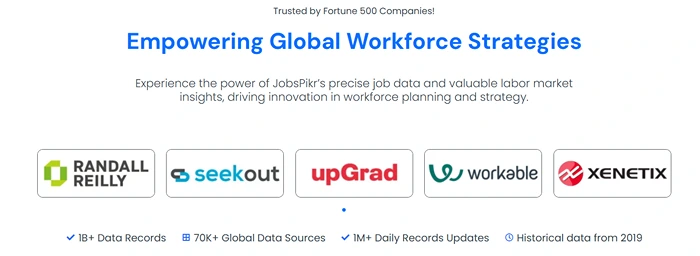
See JobsPikr in Action
Track regional talent micro-markets and hiring trends in real time—so you can hire faster, cheaper, and with confidence.
Frequently Asked Questions
What is a labor shortage?
A labor shortage occurs when the number of available workers is not enough to meet the demand for jobs in a given market or industry. This can lead to unfilled positions, slower business operations, and increased pressure on existing employees. It often results in employers raising wages, offering incentives, or expanding training programs to attract talent.
Why is there such a huge labor shortage?
Several factors have contributed to the current labor shortage:
– Aging workforce: Many older workers have retired early or left the workforce entirely, especially during and after the COVID-19 pandemic.
– Skills gap: There’s a mismatch between the skills employers need and what job seekers currently offer.
– Low participation rates: Some workers are staying out of the labor force due to childcare responsibilities, health concerns, or career shifts.
– Reduced immigration: Tighter immigration policies have slowed the flow of workers in industries that rely heavily on migrant labor.
– Shift in job preferences: Workers are increasingly seeking flexible, remote, or purpose-driven roles, leaving certain sectors—like hospitality or manufacturing—short-staffed.
This combination of economic, social, and demographic changes has created a tight labor market across many industries.
What is the definition of labour shortage?
A labour shortage is defined as a situation where the supply of workers is insufficient to fill available job openings at current wage levels and working conditions. It’s not just about the number of workers available—it also considers whether those workers have the right skills, experience, and willingness to take on specific roles.
Labour shortages can be temporary (due to seasonal demand) or long-term (caused by structural changes in the economy or workforce demographics).
Is the global labor shortage real or exaggerated?
The global labor shortage is real, but it’s widely misunderstood. What exists today is not a universal lack of workers across all jobs and regions, but a highly uneven distribution of skills, experience, and availability. Certain sectors and locations face chronic shortages due to aging workforces, stalled training pipelines, and rising skill complexity, while others experience surplus candidates. Labeling it as a single global problem oversimplifies a structural issue that varies significantly by role, industry, and geography.
Which industries are most affected by labor shortages in 2025?
Labor shortages in 2025 are most severe in industries that rely on specialized, hands-on, or highly regulated skills. Healthcare continues to struggle due to burnout, retirements, and limited training capacity. Construction and skilled trades face long-term gaps caused by decades of underinvestment in vocational education. Advanced manufacturing, logistics, transportation, cybersecurity, and education also experience persistent shortages because the skills required take years to develop and cannot be replaced quickly through short-term hiring or automation.
How do global conflicts contribute to labor shortages?
Global conflicts disrupt labor markets by triggering large-scale displacement of skilled workers, often permanently. When conflict begins, professionals such as engineers, doctors, and IT workers leave first, creating immediate shortages in affected regions. Over time, many of these workers settle elsewhere, leading to long-term brain drain. Host countries face integration challenges due to credential recognition, language requirements, and housing constraints, which means skills are often underutilized. The result is prolonged talent loss on one side and imperfect absorption on the other.
